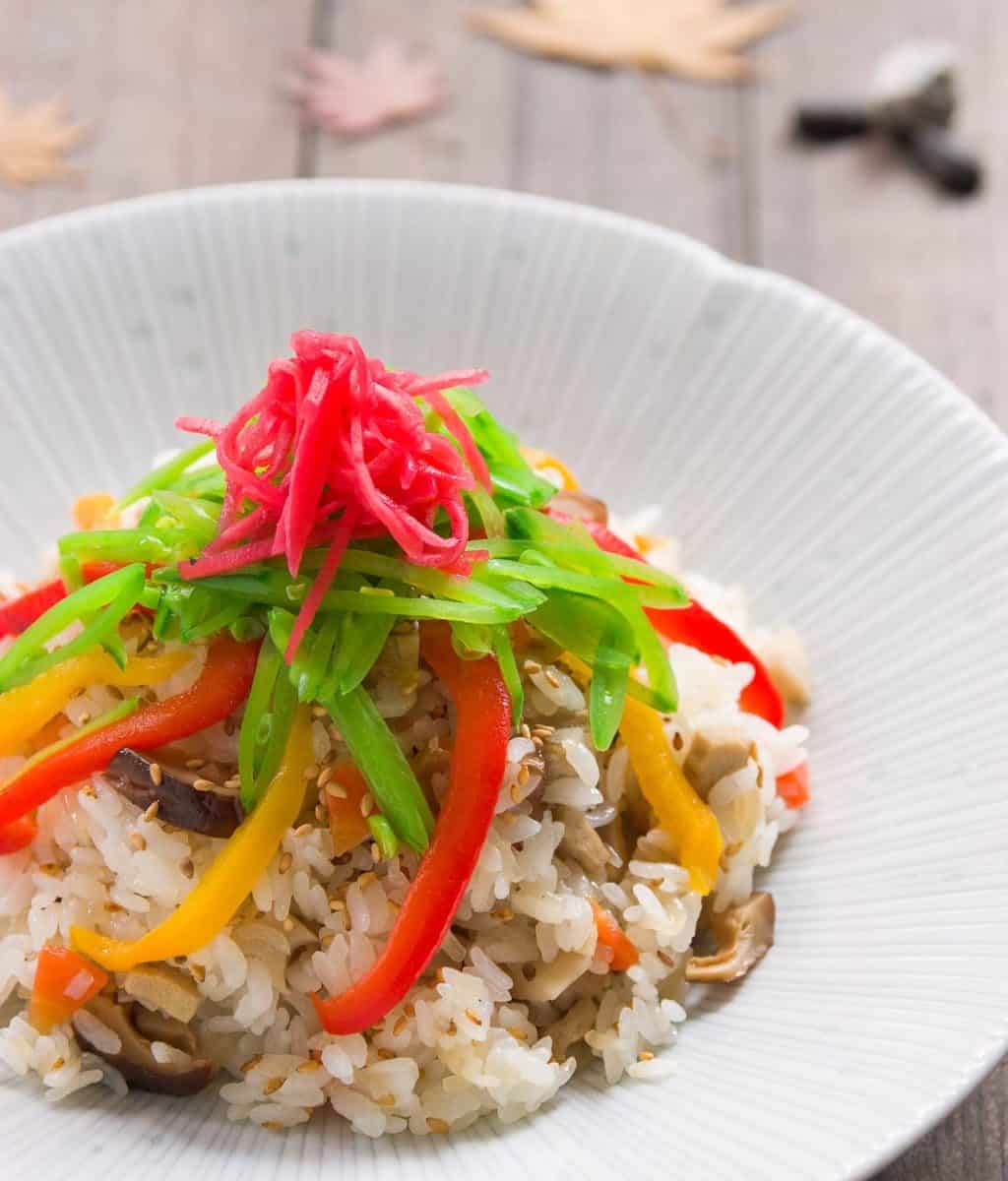
Most of you probably know Chirashizushi(ちらし寿司, literally "scattered sushi") as a large bowl of sushi rice topped with slices of sashimi. Indeed, it's one of my favorite dishes to order at a sushi restaurant when I'm dining alone, because I can get a taste of everything, in a quick, relatively inexpensive bowl. But growing up, I knew Chirashizushi as an entirely different dish.
As a kid, my parents were never really into throwing parties and entertaining, but on the rare occasions we did have guests over (special birthdays, graduations, etc), my mom would be up into the early morning hours the night before, cooking her greatest hits. Chirashizushi was one of those dishes, and her version was always loaded with seasoned vegetables and topped with a scattering of vibrant sugar peas, egg and red ginger. It not only set the mood for the table with its festive confetti of color, it also had a satisfying balance of textures and tastes that changed with every bite.
My mom's recipe includes kinshi tamago (golden egg threads), and occasionally some boiled shrimp on top, but I've chosen to go completely plant-based on mine, so it's a vegan sushi bowl. I did leave off the egg in this sushi bowl recipe, but I've got a delicious vegan version of tamagoyaki that would be perfect on this. Just slice the omelette into golden threads. And using marinated roasted bell peppers not only provides a better color than boiled shrimp, it also adds a marvelous fruity flavor that compliments the Chirashizushi beautifully.
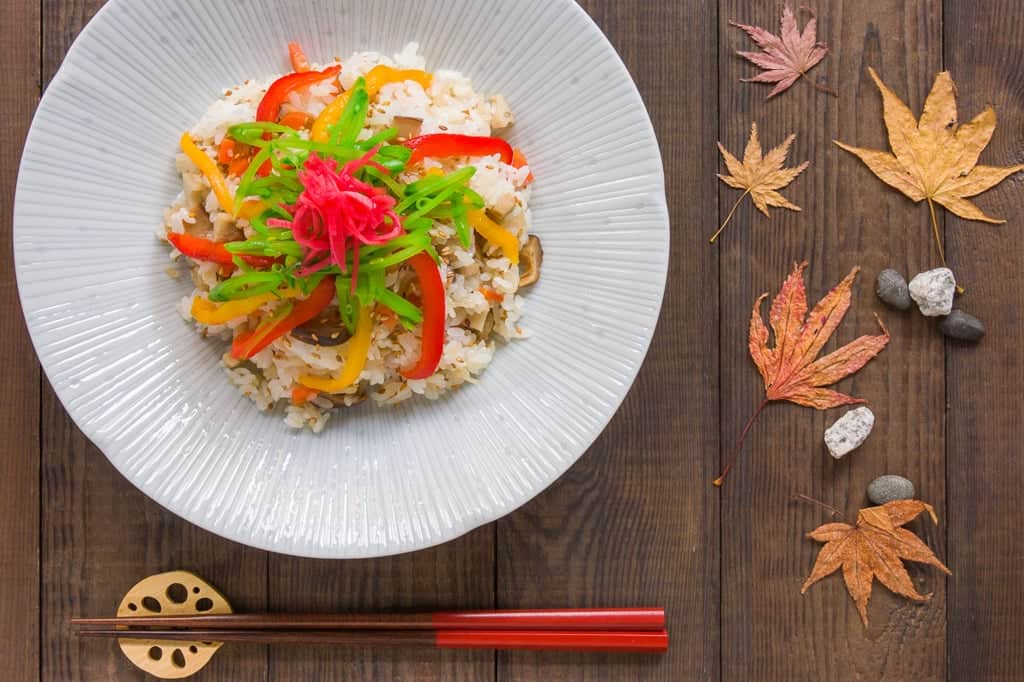
As for the simmered vegetables and proteins that get mixed into the rice, pretty much anything that adds texture and color work, but my personal favorite combination is: shiitake mushrooms, koyadoufu, carrots, lotus root, and shirataki noodles.
Although it's tempting to use fresh mushrooms, I always prefer using dried shiitake mushrooms for Chirashizushi because they have a much more potent aroma than fresh ones do. The water that you use to rehydrate the mushrooms also becomes a stock that's used to cook the rest of the ingredients in.
Koyadofu is freeze dried tofu which has the texture of a fine sponge (the kind used to apply makeup). While that may not be most appetizing description, it has a fairly neutral flavor and is a champ at picking up and holding onto the flavors of whatever you cook it with. This makes it the perfect delivery vehicle for all the great flavors of the other vegetables in the mixture, and flavorful texture is just what you need to make a vegan sushi bowl interesting. You could also use my Atsuage, which also absorbs flavors marvelously, and provides even more texture and flavor. The carrot, while primarily for color, adds its own brand of umami along with a bit of extra sweetness to the rice. The lotus root contributes a marvelous crisp texture, but if you aren't able to find fresh lotus root (usually available at Asian grocery stores), you can substitute water chestnuts, or jicama.
Lastly, adding noodles might sound like an odd addition to a rice dish, but shirataki noodles have a unique texture that when chopped up, resemble grains of rice. This gives your vegan sushi bowl another vessel for carrying flavor that seamlessly incorporates into the rice. If you care about such things, it also adds bulk, while hardly adding any calories (a typical pack contains only 20 calories).
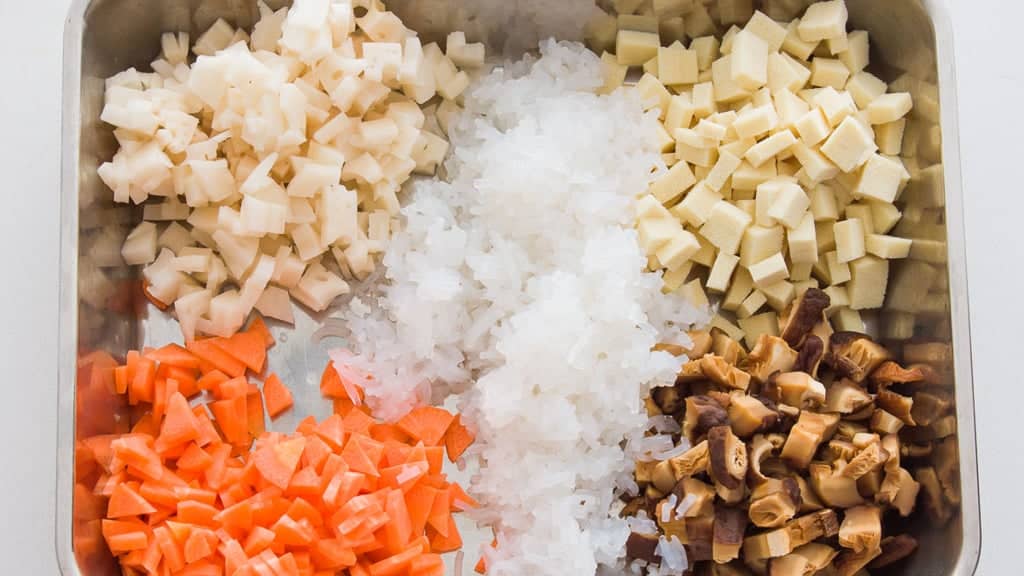
While there are a lot of individual components to prepare, steps 1-4 can be done concurrently, and be prepared up to a day in advance. There's a recipe for the sushi rice here, as well instructions for roasted red pepper and yellow pepper following these steps. If you can't find koyadofu, you can substitute my vegan ground meat and skip step 2, or even use my Atsuage instead. One of the best things about a Sushi Bowl is that anything goes, as long as it suits your tastes and dietary needs.
This recipe first appeared on norecipes.com but due to its age I've moved it here to my personal recipe archive. Check out the full No Recipes Archives for more older recipe or check out some of my favorite recipes.
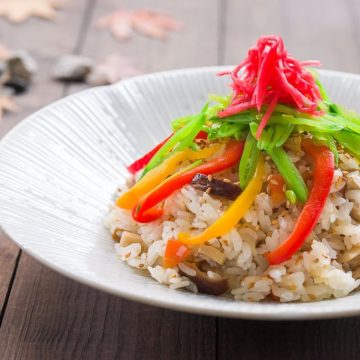
Units
Ingredients
for the rice
- 20 grams dried shiitake mushrooms (~3 large mushrooms)
- 2 blocks koyadofu (freeze dried tofu)
- 100 grams lotus root
- 2 teaspoons vegetable oil
- 75 grams carrot (~1 , quartered lengthwise then thinly sliced)
- 150 grams shirataki noodles (finely chopped)
- 1 cup vegetable stock
- ½ cup sake
- 1 tablespoon evaporated cane sugar
- ½ tablespoon soy sauce
- ¼ teaspoon salt
- 1 batch prepared sushi rice
- 1 ½ tablespoons toasted sesame seeds
for toppings
- 100 grams snap peas
- 200 grams roasted red bell pepper
- 200 grams roasted yellow bell pepper
- 1 teaspoon evaporated cane sugar
- ¼ teaspoon salt
- benishoga (red pickled ginger)
Instructions
- Put the shiitake mushrooms in a bowl and add 1 ½ cups of boiling water. Let these rehydrate for 30 minutes. Squeeze out the extra liquid from the mushrooms, (reserving the soaking liquid for later) remove and discard the stems, and then chop into thin squares.
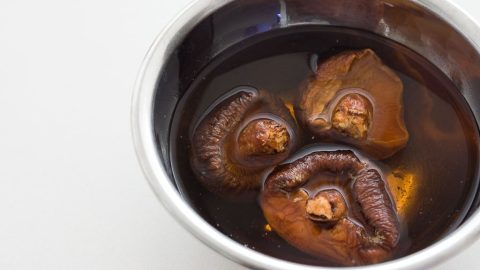
- Put the koyadofu in a bowl of room temperature water for 30 minutes. Squeeze out the extra water, and then slice it into small thin squares.
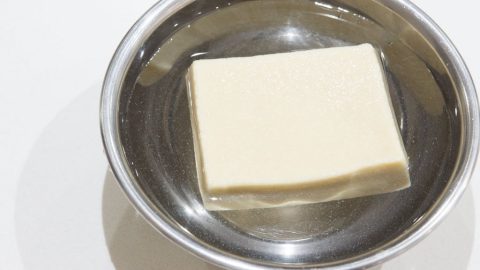
- While you are waiting for the dried ingredients to rehydrate, roast the bell peppers using the instructions here. After roasting and peeling, slice them into 2-inch long strips. To make the seasoning combine 1 teaspoon of sugar with ¼ teaspoon of salt and sprinkle on the bell peppers, tossing to coat evenly.
- To blanch the snap peas, bring a pot of water to a boil. Prepare a large bowl of icewater and trim the fibers off the top and sides of the peas. When the water comes to a boil, add the snap peas and blanch for 30 seconds. Drain and immediately dunk them in the ice water. Drain the snap peas and slice into thin long strip at an angle.
- Prepare a bowl of water with a teaspoon of lemon juice or vinegar in it. Peel the lotus root and chop into ¼-inch pieces, putting them in the acidified water to keep them from changing color. Drain them before sautéing with the other vegetables.
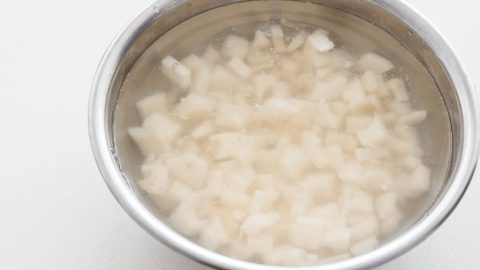
- Next, start on the sushi rice.

- Once the shiitakes and koyadofu are rehydrated and prepared, add the oil to a frying pan over medium-high heat. Sauté the carrots for 1 minute.
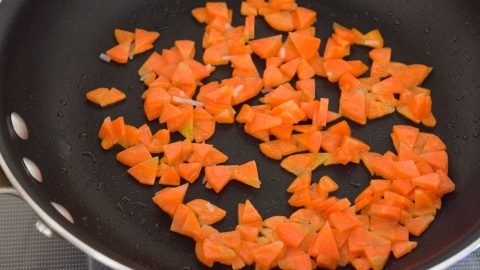
- Add the shiitake mushrooms, koyadofu, lotus root, and shirataki noodles and continue to saute for another minute or so.
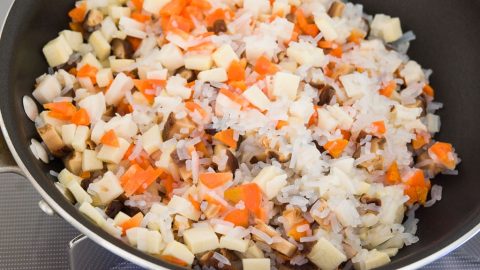
- Add the vegetable stock, sake, sugar, soy sauce, and salt to the pan and bring to a boil. Cook until all the liquid is gone and the carrots are tender (about 10 minutes).
- Pour the mixture into a sieve and let any remaining liquid drain while you prepare the other components.

- Add the simmered vegetables from step 10 along with the toasted sesame seeds to the prepared sushi rice and fold into the rice.
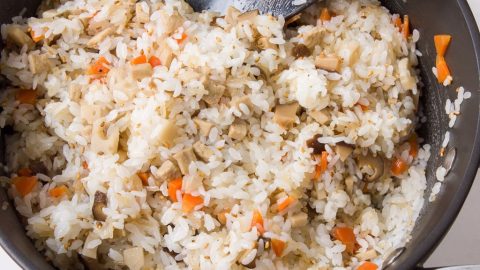
- You can either serve this on a large platter/bowl with the marinated peppers, snap peas and benishoga scattered on top, or you can plate individual portions and arrange the vegetables on top as seen in the photos.


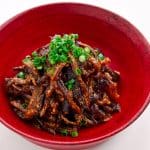


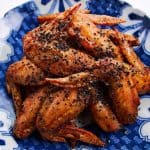





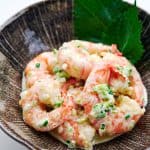

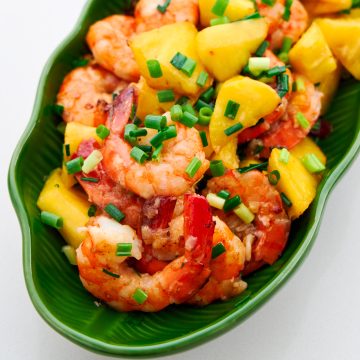
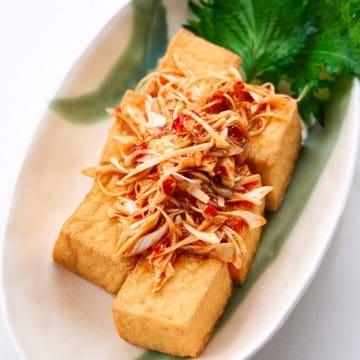
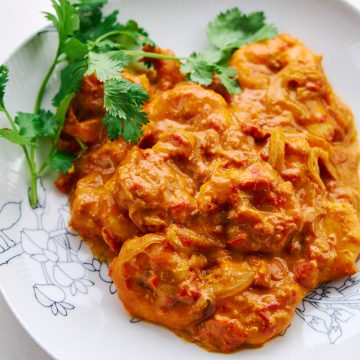
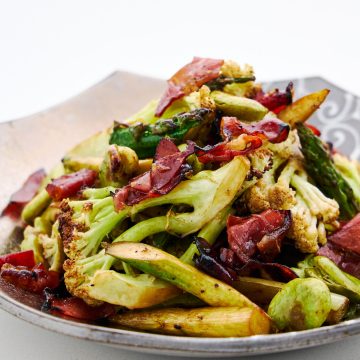
Comments
No Comments